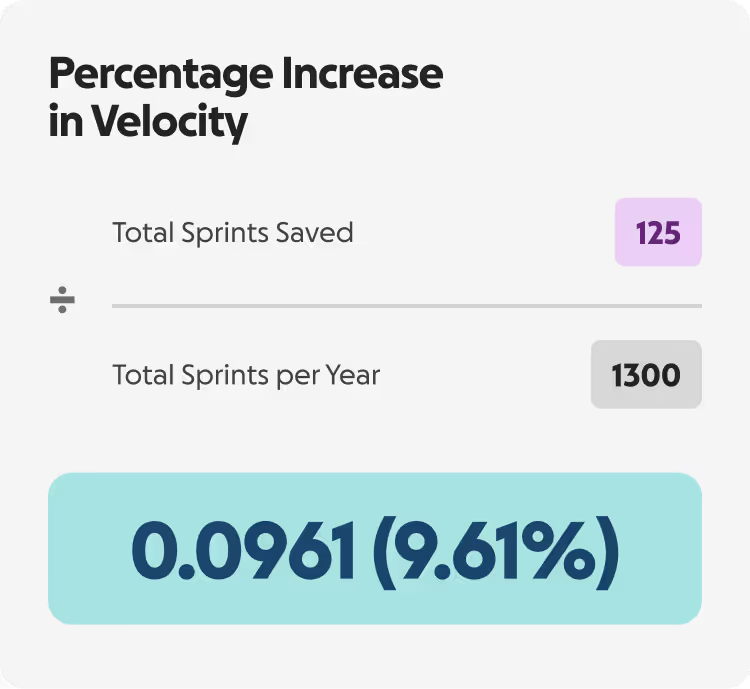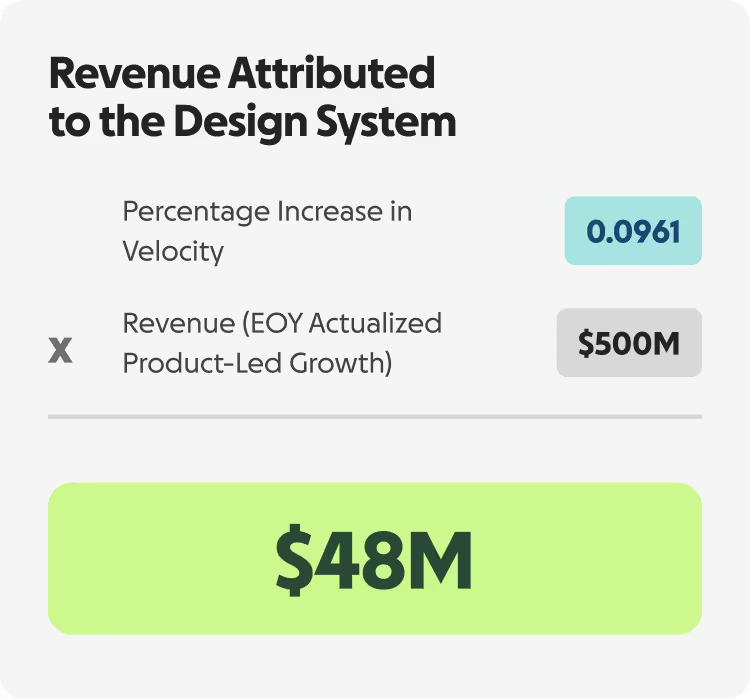
For the first time in company history, my engineering lead and I set up ways to track design system impact. We measured component usage, and launched a survey with our internal teams to get honest feedback on what saved time, what didn’t, and what needed fixing.
Most design system teams stop there. We didn’t. We wanted to know how much all that time saved actually meant.
Our survey answered the big question: how much time were designers and engineers really saving? Crunching average salaries, it came out to over a million and a half dollars a year. That felt huge, but it was just the start.

Enter the Senior Director of Business Operations—fancy title, real math wizard. Together, we stripped out the noise and focused on product-led growth in the product org. Then came the magic: we connected the time our system saved to the product growth that resulted from the work designers and engineers went on to do with that extra time.
The result? Over $40M in business growth in 2024, up from $18M the year before. And it’s not a one-off. More users, more time saved, more product growth—the number keeps climbing. The system doesn’t just add value, it multiplies it.
Here’s a peek at the math, using sample numbers for illustration (not actual company data):



Impact has earned our design system team a lot of trust. Design polish is still our heartbeat, but we keep improving, step by step, always focused on real impact.
Still, some things are harder to put a dollar sign on, like a rebrand, which would be almost impossible without a design system for mid–large size companies. In those cases, the value is obvious, even if the math is messy.
The truth is, design systems are never “done.” And that’s the fun part. Every improvement sparks the next. Every challenge sets up a new opportunity. We’ll keep building, keep learning, and keep proving what design can really do.